Abyaneh Village Kashan (Iran Red Village): Photos, History
Isfahan province, long recognized as the most extraordinary place in Iran, embraces an eccentric historical village. The magnificent Abyaneh traditional village, known best for its history and architecture, is one of the most visited sites by both the natives and travelers. Located in Natanz County, the historical village of Abyaneh is undoubtedly a unique spot to add to your list of favorite sites to visit.
Abyaneh UNESCO
The village of Abyaneh was marked as a world heritage site by UNESCO on 09/08/2007. This archeological village is also compared with Masouleh village, another astonishing historical location in the Northern side of Iran. Nevertheless, Abyaneh village is unique in its language, culture, ceremonies, and artifacts.
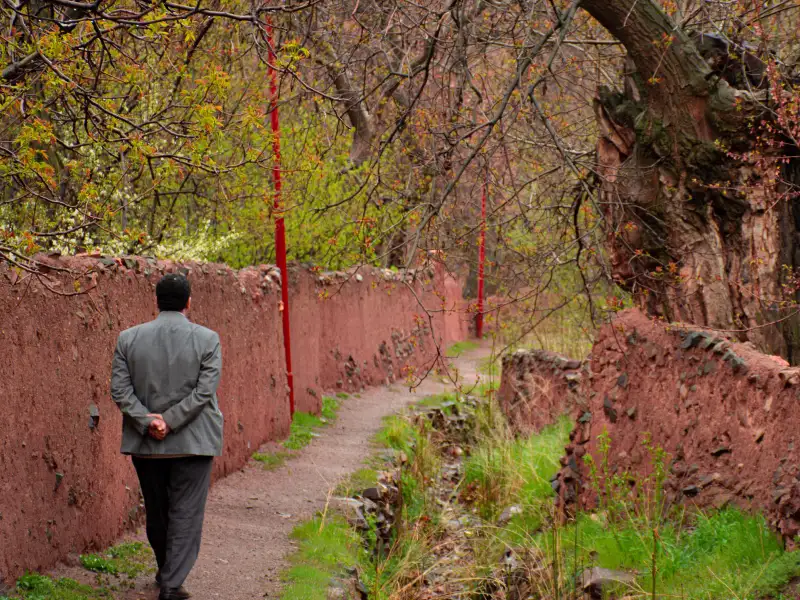
Abyaneh Architecture
But what is Abyaneh famous for? The historic Abyaneh village, also called The Red Village or the Hermes Village, is famous for its red clay houses constructed on the hillside of Shahin Peak, which is 43 miles from the west of Kashan.
The houses are in the north of the Borz River and built in the form of a stairway ascending into the Shahin Peak. The windows of the clay houses are sash windows with small wooden balconies.

The flat rooftop of every house serves as a yard for the house built above it. For this reason, the village of red houses may seem like a colossal staircase shining like a gem over the peak.
Abyaneh Climate
Abyaneh Village has an ideal climate and natural scenery. The four seasonal climate makes it perfect for snapping pictures of red houses covered in snow or shimmering through the bright sunlight during summer.
You can visit Abyaneh Village any time of the year, depending on your preferences. The land is both mountainous and desert-like, which is one of the reasons why this village is so well-known and favored by so many travelers.
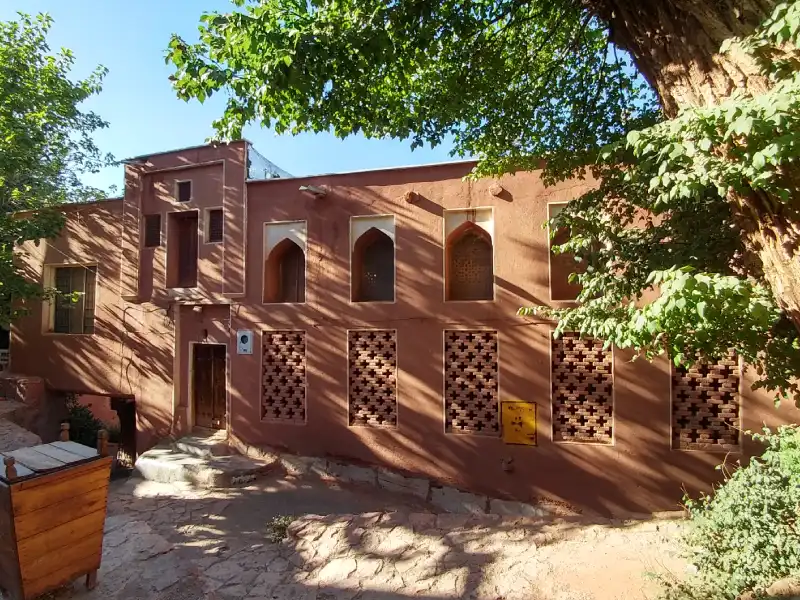
This Red Village is built uphill and is around 2222 meters above sea level. Because the place is located on a mountain, during winter, the weather will be cool and snowy, creating a magical atmosphere with the early morning mist moving through the historical red houses.
Abyaneh Kashan People
Travelers who are fond of sightseeing and experiencing the day and the life of the hardworking citizens of the countryside can journey to this opulent village of Iran.
The historical village of Abyaneh has a population of approximately 300 residents that are 147 families in total. The people of Abyaneh spend their days gardening, farming, and taking care of the domesticated animals in their own traditional manners.
Some of their crops include wheat, barley, potatoes, and several other flavorful fruits, which are commonly grown in Iran, such as pear, apples, plums, apricots, walnuts, and almonds.
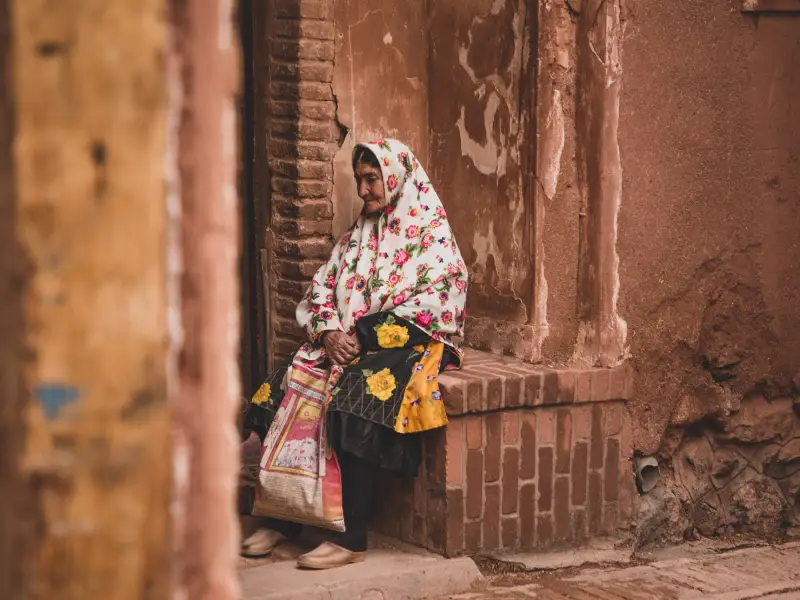
Visiting Abyaneh Village will allow you to taste all the fruits and nuts harvested by the hands of these skilled farmers and build an exceptional sensation in you.
The women in Abyaneh are as equal as the men and are as well involved in the economic affairs of their hometown. Carpet weaving is one of the most common works of the women of Abyaneh and is considered a way of making a living for them.
Due to the high rate of demand, Abyaneh village has set up thirty carpet-weaving workshops that are still active today. These women are more talented than you think!
Weaving the traditional light cotton summer shoes worn by the villagers called “The Geeveh” is another one of the many things these people do.
Ceremonies
In spring, the red roses bloom, and it is time for the farmers to collect these bright, fragrant flowers from the gardens and start their customary rose water ceremony called “Golab Giri” in Persian.
You wouldn’t want to miss this exceptional moment. Hundreds of visitors are to be seen in Abyaneh Village during early spring for this specific ceremony. Usually, crowds of people stand to watch and take shots of the residents performing their traditional rose water ceremony.
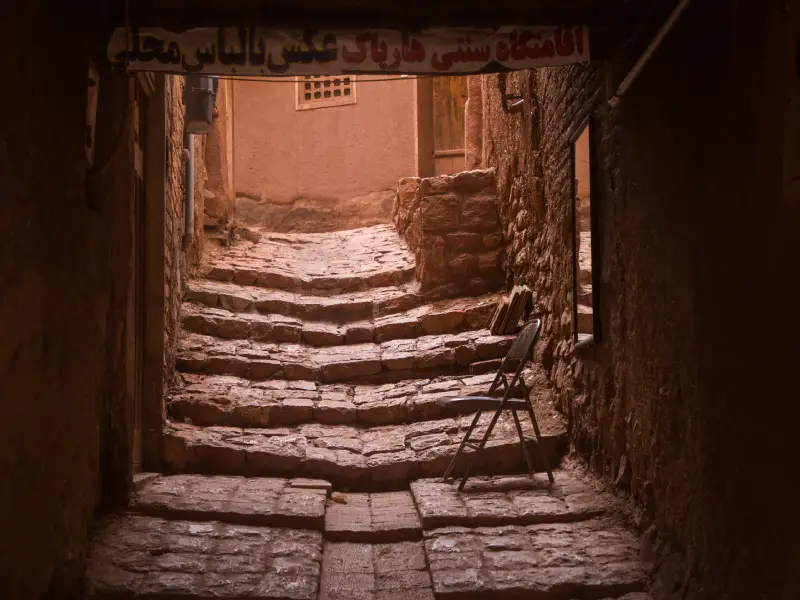
When mourning for honoring the deceased, a peculiar ceremony is performed, called “JeghJeghe Zani,” which solely takes place in Abyaneh Village.
A special set of small wooden instruments are hit against each other, making a sound that is carried out by a group of Abyaneh men strolling around the village.
Clothing and Culture
Over the years, the people of Abyaneh have preserved their culture and way of dressing. The women wear colorful dresses and scarves to the length of their waists with black frizzled skirts covering just below their knees with thick socks to cover their shins.
In winter, the women wear velvet dresses called “korty”. The men in Abyaneh wear long and loose shirts and black pants called “Dabit”.
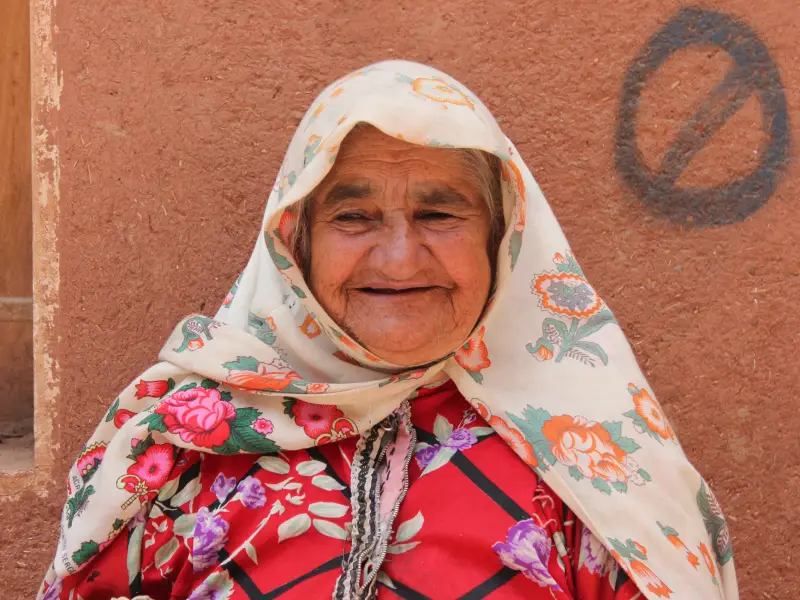
Married men’s clothing differs from single men’s clothing. The married have lines, and the single has diamond shapes sewn on their pants. The men also wear felt hats throughout the day.
The lack of contact between the people of Abyaneh and the other surrounding villages is one of the main reasons their culture is still rich and has stayed untouched for thousands of years.
Abyaneh People Language
People of Abyaneh speak differently from the other parts of the country. They speak in Abyaneh, which its residents call “Viuna,” a local language only known to its people.
For understanding the root of this specific language, linguists learned the word “Vi” and “Viyaneh” meant a land carpeted with abundant trees. Over time the word Aviyaneh changed to Abyaneh.
Abyaneh Souvenirs
If you are planning to visit the historical village of Abyaneh, you will come across the men and women sitting by their houses selling Lavashak; a popular healthy snack is also known as The Persian fruit leather, which is made from fruit extracts and dried and rolled into cylinders for a tasty mouthwatering bite.
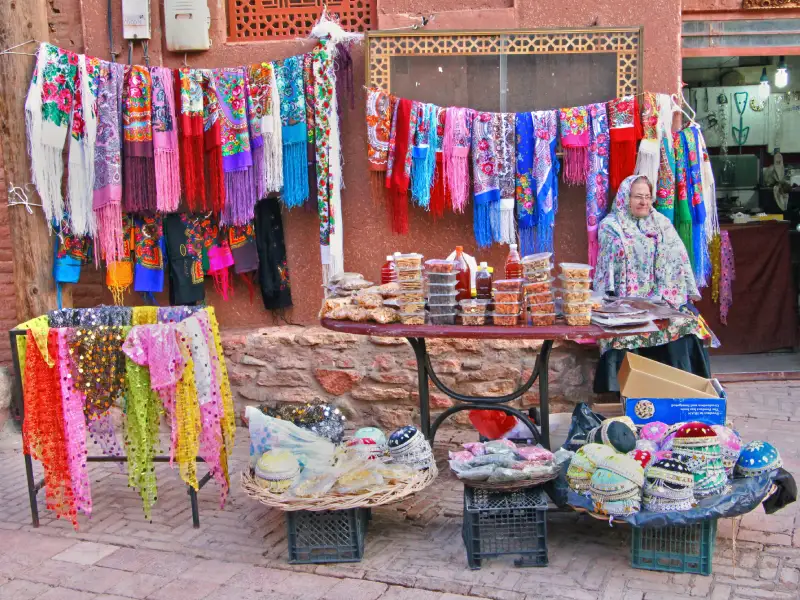
Other souvenirs available for purchase are their high-quality crops (fruits and nuts), as well as handicrafts. Traditional jewelry, such as necklaces and bracelets that are worn and made by the Abyaneh women are sold to visitors from all around the world to cherish their history and culture.
Carpets and cotton shoes are another one of their stunning handmade crafts that are bought commonly by tourists as well.
What is the history of the village of Abyaneh?
In 1975 Abyaneh was recognized as a national heritage in Iran. The total number of houses in Abyaneh village is exactly five hundred, and they seem to form a steep-looking ground since the houses are stacked together.
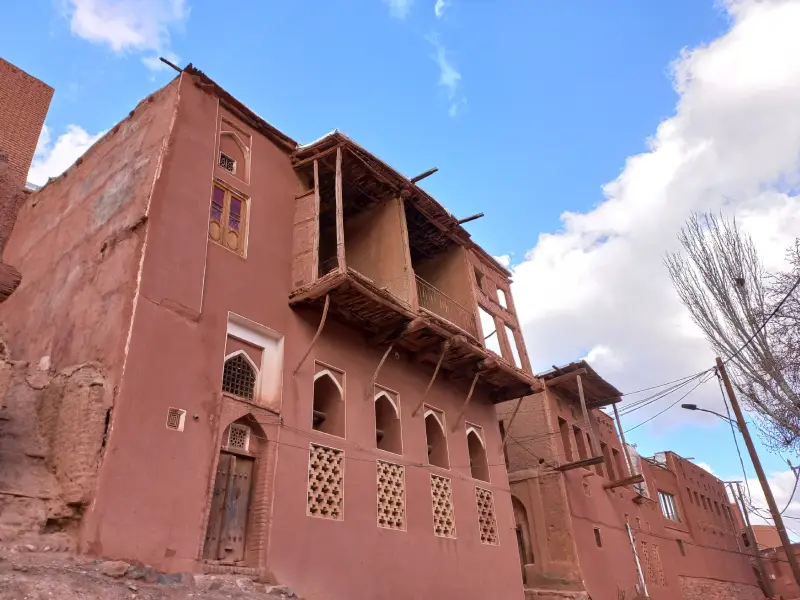
The village was built around the Safavian, Qajar, and Seljuk Dynasties. The red façade of the village comes from the clay found in a mine in the vicinity of the Abyaneh village that was used for erecting the houses.
How old is Abyaneh?
The antiquity of Abyaneh village is not clearly specified; however, according to archeologists, it is estimated that its history goes back 1,500 years, which makes this traditional village the most aged residential area in Iran.
Lastly
The red village is, without a doubt, a fantastic spot for everyone to discover the daily lives of this unique group of friendly villagers welcoming visitors from anywhere in the world to observe their unusual ceremonies, sightsee their houses and streets, as well as enjoying every aspect of its nature and mountainous landscape.
Are you planning to travel to Iran and looking for an Iran resort? Consider Matin abad eco resort. Maybe the things to do in Kashan are also interesting for you.

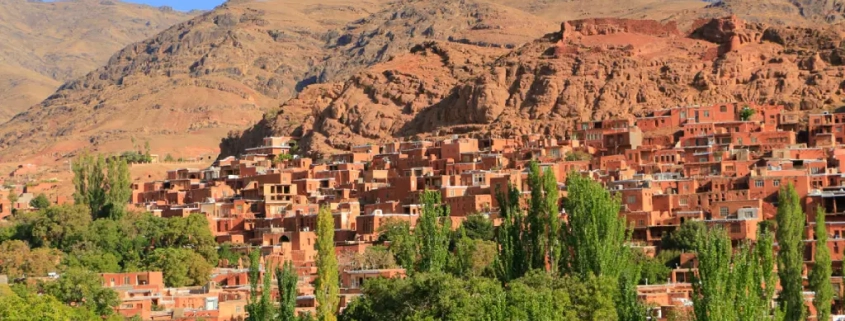



Leave a Reply
Want to join the discussion?Feel free to contribute!